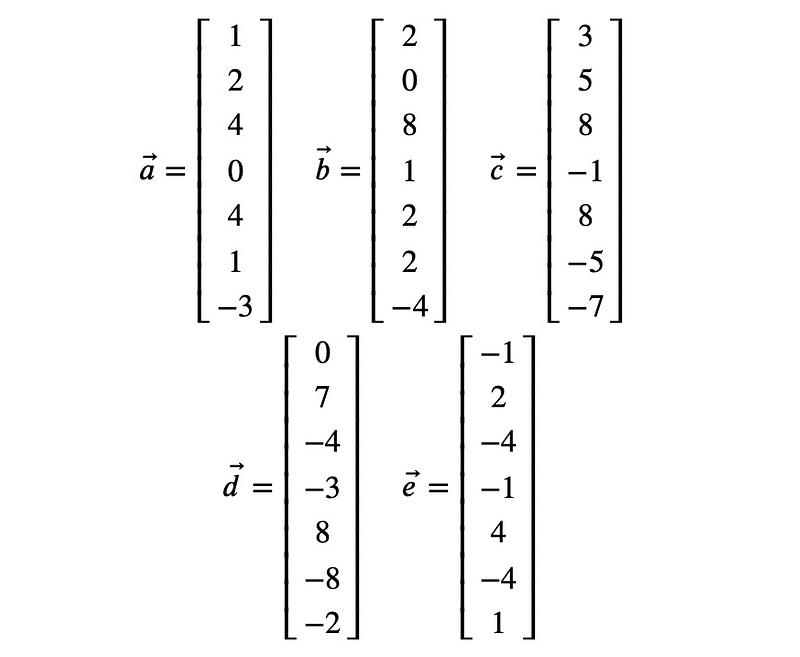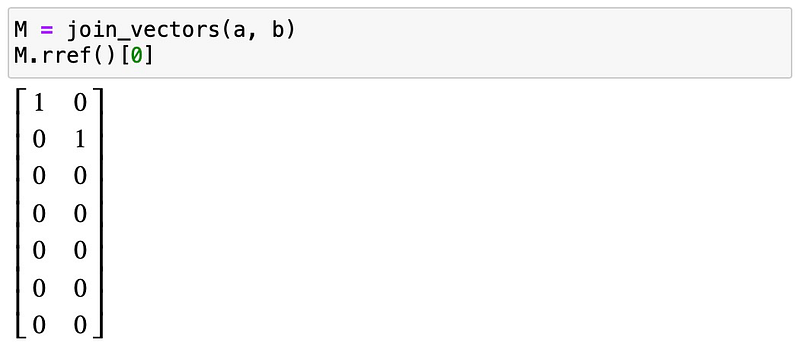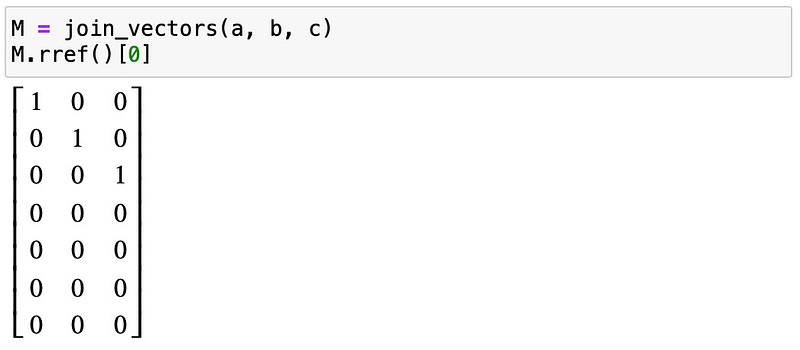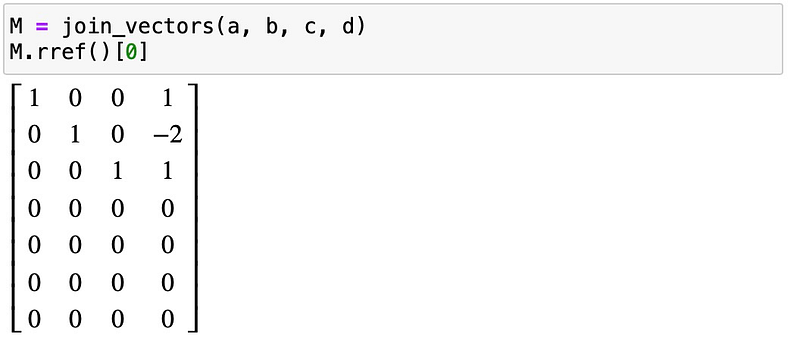Understanding Linear Dependence and Independence with SymPy
Written on
Chapter 1: Introduction to Linear Dependence
In the realm of computer algebra systems, mastering their use necessitates consistent practice. This series is designed to guide you through common and less common challenges using tools like SymPy, Sage, and Mathematica.
Today's Challenge
Our task is to demonstrate that the following set of vectors exhibits linear dependence:

Next, we need to identify which vector(s) should be removed to ensure the remaining vectors are linearly independent.
Solution Using SymPy
To begin, we define our vectors:

The approach involves assembling these column vectors into a matrix and calculating its row-echelon form. If the row-echelon form is diagonal with only ones, the vectors are independent; otherwise, they are dependent.
We can create a simple helper function to combine column vectors into matrices:

Now, let’s verify that the five vectors are indeed linearly dependent:

The results indicate that this matrix is not diagonal, confirming the presence of linear dependence.
To determine which vector(s) contribute to this dependence, we can construct the set from the beginning, starting with two vectors:

This configuration is diagonal, suggesting that these two vectors are linearly independent.
Next, we proceed to add more vectors:

They remain independent at this stage. Continuing on:

At this point, the matrix is no longer diagonal, indicating that this vector can be expressed as a linear combination of the previous ones. Thus, we will exclude it and move forward:

Ultimately, the remaining vectors form a set of linearly independent vectors.
The first video titled "How to Determine if a Set of Vectors is Linearly Independent" provides further insights into this topic, offering a visual explanation of the criteria for linear independence.
Chapter 2: Exploring Column Space with Python
In this chapter, we will delve into the concept of the column space of a matrix using Python and the SymPy library.
The second video titled "Column space of a matrix using Python and sympy" demonstrates how to visualize and calculate the column space of a matrix, enhancing your understanding of linear algebra concepts.